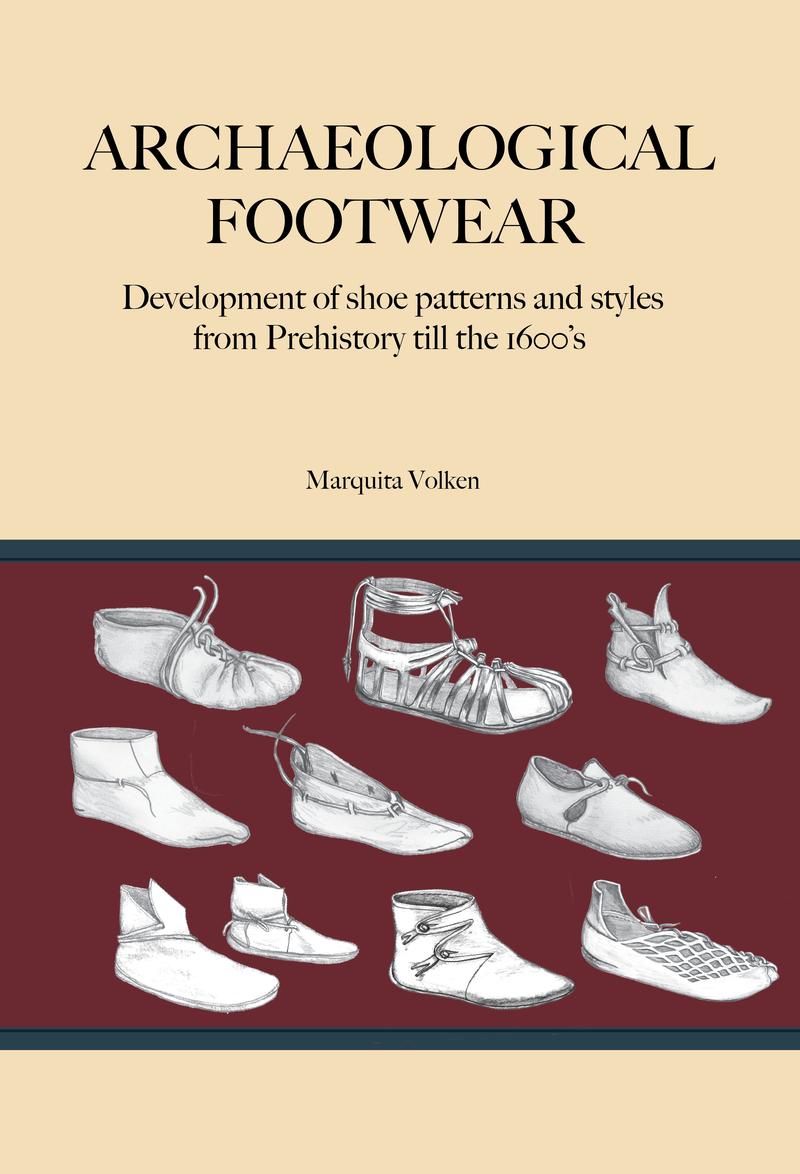This comprehensive volume delves deep into the cutting patterns, shoe style and chronology revealed by the author’s interpretation of archaeological and other discoveries of recovered remains of shoes and shoemaking tools. Much light has been shed on the materials, design and construction of shoes through the ages in Europe. This has allowed the author to propose a chronological order for the technical, stylistic and typological complexity encountered among recovered archaeological footwear.
First Published by Spa-Uitgevers 2014
This Archetype edition is a revised reprint with additions to Chapter 5
Have a look inside the book
1. Introduction
1.1. Overview of calceology
1.2. Current methods in calceological research
2. Review of literature and history of calceological research
2.1. Introduction and delimitation of the subject and corpus
2.2. The first collections: Ancient shoes from peat beds and bogs
2.3. The World War II reaearch haitus and the second half of the twentieth century
2.4. Methodological problems associated with the expanding literature base
2.5. The end of the twentieth century: the search for solutions
3. Methodology
3.1. The history of the primary cutting pattern research
3.2. Technical interpretation of the primary cutting patterns
4. Primary cutting patterns
4.1. Primary cutting patterns: integral soled shoes
4.2. Hybrid cutting patterns
4.3. Primary cutting patterns: separately soled shoes
4.4. Conclusion primary cutting patterns
5. Named shoe styles and chronology
5.1. Introduction
5.2. Neolithic leather footwear
5.3. Bronze Age leather footwear
5.4. Iron Age leather footwear
5.5. Roman Period leather footwear
5.7. Mid fourth to mid fifth century shoe fashions and styles
5.8. High Middle Ages leather footwear
5.9. Late Middle Ages leather footwear
5.10. Late Middle Ages / sixteenth century leather footwear
5.11. Primitive styles
5.12. Discussion of primary cutting patterns, named styles and chronology
6. Documentation techniques
6.1. Drawing recovered archaeological leather fragments and footwear
6.2. Inventory of style elements
6.3. Fastenings
6.4. Sole / upper constructions
6.5. Shoemaking, pattern making and reconstructive archaeology
7. Conclusion
8. Summary / Résumé / Zusammenfassung / Glossary
9. Catalogue
10. Bibliography
11. Index
11. Index
ntroduction11.1. Overview of calceology11.2 Current methods in calceological research52. Review of literature and history of calceological research112.1. Introduction and delimitation of the subject and corpus112.2. The first collections: Ancient shoes from peat beds and bogs122.3. The World War II reaearch haitus and the second half of the twentieth century162.4. Methodological problems associated with the expanding literature base182.5. The end of the twentieth century: the search for solutions223. Methodology293.1. The history of the primary cutting pattern research293.2. Technical interpretation of the primary cutting patterns384. Primary cutting patterns534.1. Primary cutting patterns: integral soled shoes554.2. Hybrid cutting patterns (PCP: -Y, -Wd, -Jd, -Vvd, -Md594.3. Primary cutting patterns: separately soled shoes654.4. Conclusion primary cutting patterns735. Named shoe styles and chronology775.1. Introduction775.2. Neolithic leather footwear805.3. Bronze Age leather footwear835.4. Iron Age leather footwear855.5. Roman Period leather footwear885.7. Mid forth to mid fifth century shoe fashions and styles1155.8. High Middle Ages leather footwear1325.9. Late Middle Ages leather footwear1565.10 Late Middle Ages / sixteenth century leather footwear1715.11 Primitive styles1845.12 Discussion of primary cutting patterns, named styles and chronology1856. Documentation techniques1876.1. Drawing recovered archaeological leather fragments and footwear1876.2. Inventory of style elements1916.3. Fastenings1996.4. Sole / upper constructions2146.5. Shoemaking, pattern making and reconstructive archaeology220
